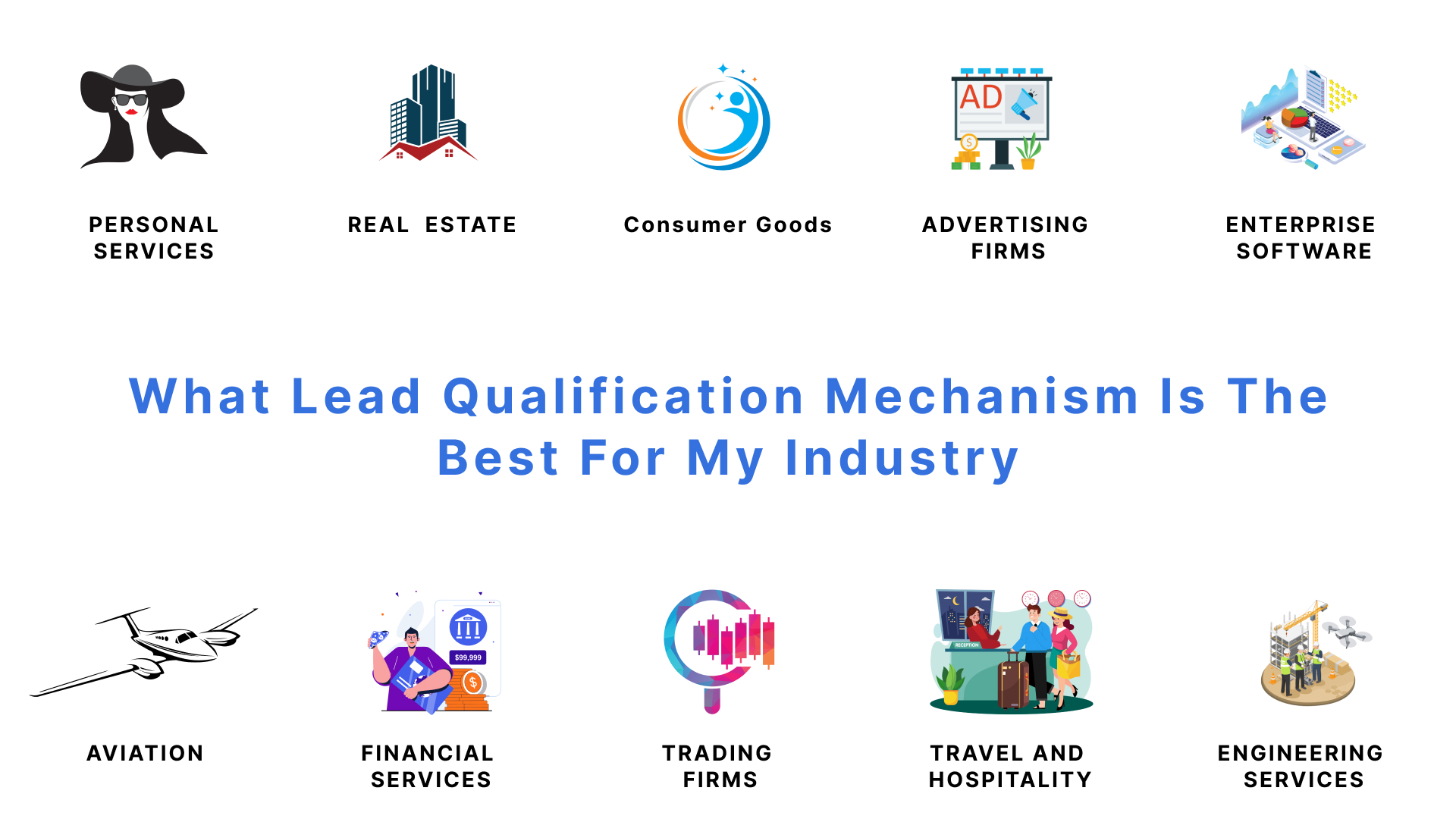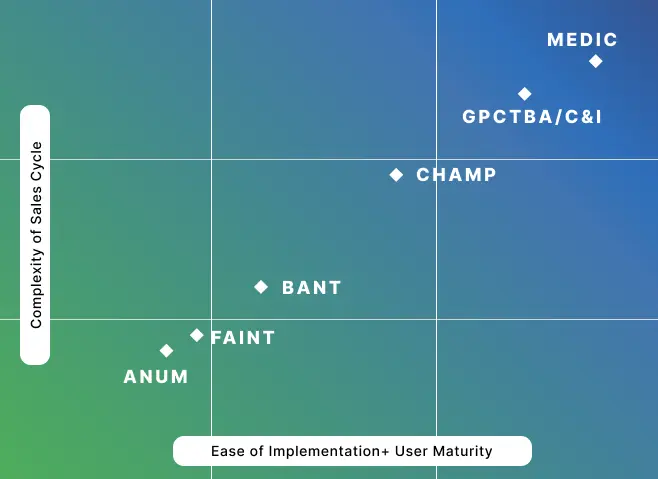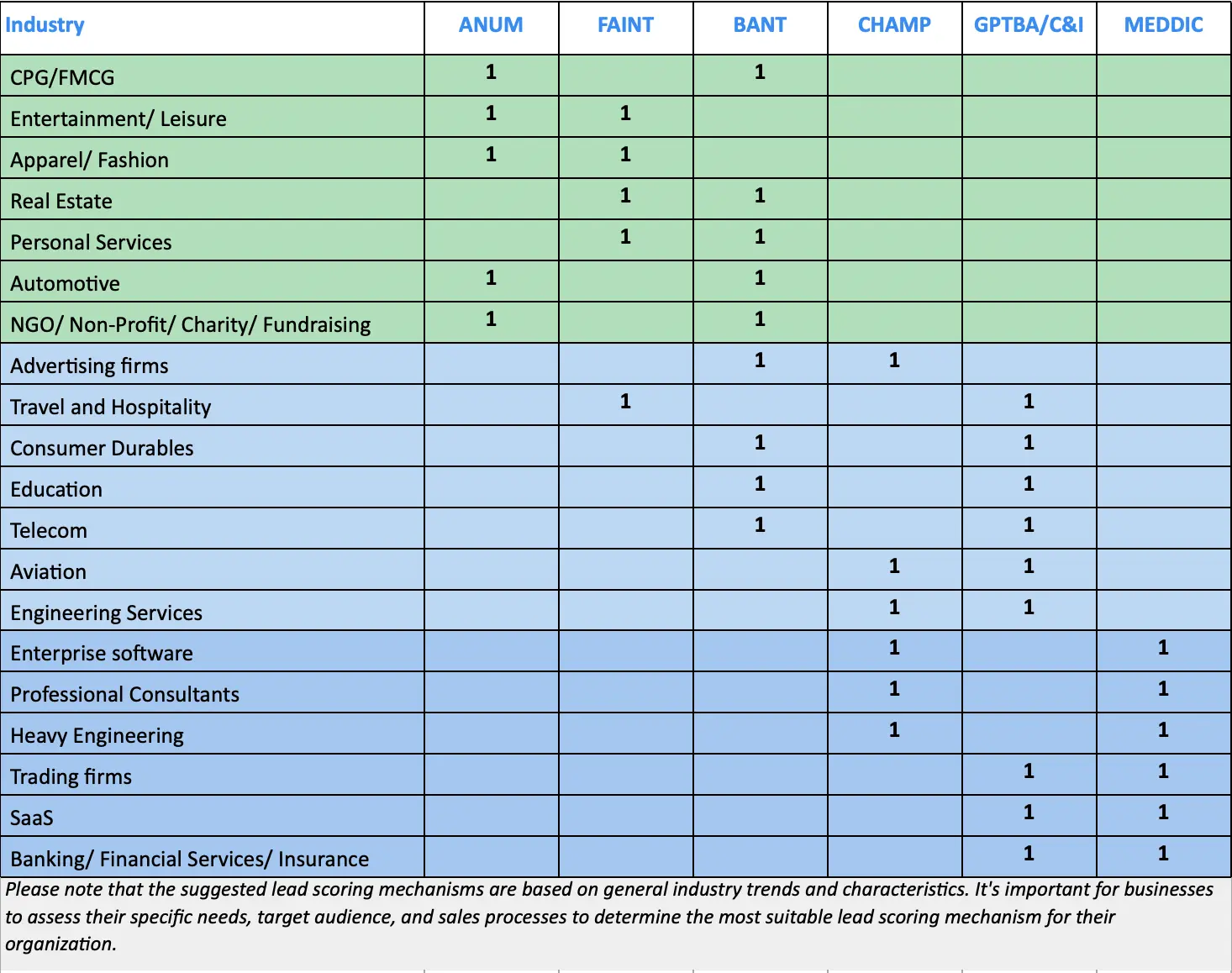Choosing the Right Lead Qualification Mechanism


What Lead Qualification Framework is Best for My Industry?
Need for Lead Qualification Framework:
Lead qualification is essential for sales teams to identify and prioritize high-quality prospects, optimize their sales efforts, and improve conversion rates. A lead qualification framework provides a structured approach to evaluate leads based on specific criteria, ensuring efficient resource allocation. However, with the proliferation of frameworks, choosing the right one for you is like swimming in an Alphabet soup today.
Popular Lead Qualification Frameworks:
- BANT: Qualifies leads based on Budget, Authority, Need, and Timeline.
- ANUM: Focuses on Authority, Need, Urgency, and Money to assess lead quality.
- FAINT: Considers Fit, Authority, Interest, Need, and Timing to evaluate lead quality.
- CHAMP: Evaluates Challenges, Authority, Money, and Prioritization to qualify leads.
- MEDDIC: Assesses Metrics, Economic Buyer, Decision Criteria, Decision Process, Identify Pain, and Champion to qualify leads.
- GPCTBA/C&I: Evaluates Goals, Plans, Challenges, Timeline, Budget, Authority, and Consequences & Implications to qualify leads.
Use Cases and Factors to Consider When Choosing a Lead Qualification Method:
To choose which framework to use, you need to consider two key factors:
- Internal Team Capability
- External Sales Cycle Complexity for Industry

Frameworks like BANT and ANUM are easy to understand and do not require very high levels of skill from the Sales team, but they may need to be more effective in mapping Procurement cycles in complex products. On the other hand, MEDDIC and CGPTBA/C&I are comprehensive tools suited to understanding and qualifying Leads in complex buying cases but need much maturity and high skill levels from the Sales team. The final decision to adopt a framework needs to balance these two variables.
A ready reckoner to help you get started is outlined below.
| Framework | Decision Makers | Size of Firms | Ticket Size | Complexity and Length of Sales Cycle | Maturity and Effort Required to Implement |
|---|---|---|---|---|---|
| BANT | Few | All sizes | All sizes | Moderate | Low |
| ANUM | Few | All sizes | All sizes | Low | Low |
| CHAMP | Multiple | All sizes | All sizes | High | Moderate |
| MEDDIC | Multiple | Medium to Large | Medium to Large | High | High |
| FAINT | Few | All sizes | All sizes | Low | Low |
| GPCTBA/C&I | Multiple | Medium to Large | Medium to Larges | Moderate | Moderate |
Industry Practices:
Selecting the best lead qualification framework depends on various factors, including the number of decision-makers, firm size, ticket size, complexity and length of the sales cycle, and the effort required for implementation. Considering these factors, organizations can choose a framework that aligns with their needs. If unsure, look at frameworks popular in their industry or consider building a customized model that, in your experience, suits your industry best.

In conclusion, lead qualification frameworks provide valuable guidance for sales teams to prioritize and convert leads effectively. Understanding the unique requirements of your business and industry is crucial in selecting the most suitable framework. By aligning with the proper framework, companies can enhance their lead qualification process, optimize their sales efforts, and ultimately drive better business outcomes.
Further Reading:
- Learn more about each Lead Qualification framework by checking out the in-depth articles on BANT, ANUM, CHAMP, FAINT, MEDDIC, and GPCTBA/C&I.
- Implementing a Lead Scoring Framework on Pronnel: Know More About How You Can Implement a Lead Scoring Mechanism on your Lead Management Board in Pronnel.
Subscribe To Our Blogs
Get the latest blog notification into your email.